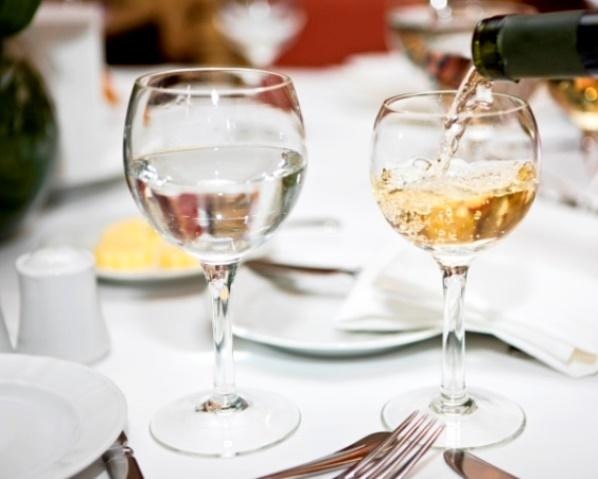Navigating The World Of Water
"Water is more than just water," says Martin Reise, water sommelier at the Stark Bar at the Los Angeles County Museum of Art. It might be a difficult food and beverage belief to wrap one's mind around, but the rising popularity of water — and high-quality, delicious water, at that — is becoming a crucial component to an overall dining experience. Consumers are becoming increasingly more aware of the taste, content, and personality of their water, noted Eric O'Toole, U.S. president of Danone Waters America, which produces both Evian and Badoit, because as humans, water is our essence. "We have a special connection to it, especially because we all drink, or should drink, lots of water every day," he explained. After all, as the food-conscious movement sweeps through the world of wine and coffee, why should water get second-class treatment?
Water experts believe that when deciding what water to drink, it's crucial that a consumer knows where that water comes from. For Acqua Panna, for example, the water originates in the hills of Tuscany on the slopes of Mt. Gazzaro in the Apennines Mountains near Florence, flowing for 15 to 20 years deep into the Earth, and is bottled at the source without any kind of additional treatment. This brief exposure to minerals results in a wonderful lightness and balance of the water. One Acqua Panna executive explained that due to its long process, one can even consider it to be "vintage water."
Just as many fine wines relate to their environment, water is an expression of its terroir, noted Andreas Larsson, the wine director in the PM & Vänner in Växjö, Sweden. "We all love to talk about terroir and that term can be used for many different products and can be applied to water," he explained. For example, Evian is named for its source located in the French Alps, where the spring water was originally discovered in the early 1800s. The water today is filtered through layers of mineral-rich glacial sands for more than 15 years before it is bottled directly at the source, noted O'Toole. Badoit, a sparkling natural mineral water, also has French roots coming from Saint-Galmier, France.
In the case of water, it's the mineral composition that affects the taste in terms of structure, hardness, softness, and after taste, which has everything to do with where the water was created, added Larsson. "Water smells of freshness and purity but not necessarily aromas," he says. Waters that are higher in acidity are the sparkling mineral waters like Pellegrino or Perrier. Pellegrino, for example, spends roughly 30 years on the ground before bottling and is carbonated with the balance of carbon dioxide. The reason waters taste differently boils down to just a few factors, including mineral composition from the surrounding earth, single source versus multiple sources, pH balance, and natural filtration versus disinfection treatment, said O'Toole.\
Now, thirsty diners and drinkers are paying more attention to how their water tastes and how it complements their meal. "Water plays an important role at the dinner table," says Larsson. "Food is 40 percent of the dining experience, but the rest is everything else. Waters plays a role and makes a difference." To that end, restaurants around the world are jumping on the trend of pairing waters with wine and in the case of Reise's restaurant in Los Angeles, Stark Bar, they are even creating separate water menus akin to a wine list. Reise caught some flak from social media for the 20-plus page water menu, but he stands by his belief that diners want a better-tasting and appropriate water for their food. For example, Larsson says, the brand Perrier is more of a "refresher" water as opposed to a dining water, and he believes that mineral water is great for hangovers for those who have overindulged with alcoholic beverages, as its rich in magnesium.
And because terroir has the same effect on both water and wine, it's natural to pair water and wine together. (There's truth to that "glass of water for every drink" tip, after all.) Reise recommends pairing a sauvignon blanc or riesling (wines that are high in acidity) with water that has no gas with less minerality, like an Acqua Panna. Another example would be pairing a dessert wine that can almost be oily with perhaps a water that has more minerals, like a sparkling water. "Water has a huge impact on your food and the experience of what you're eating," Riese said. All the more reason to drink up.
